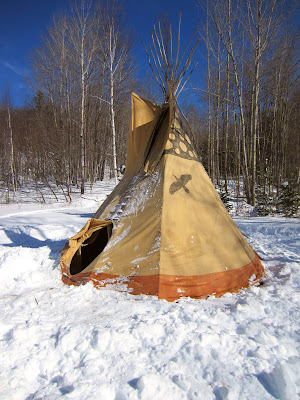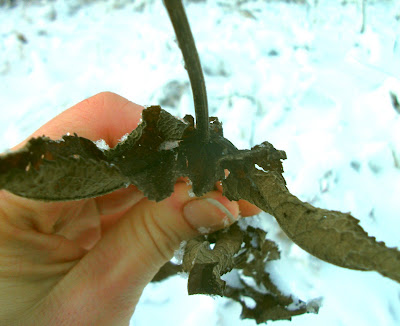











Wildneress Rhythms
A place to record my adventures of being a gentle consumer and living more fully, with less stuff.

This book is a celebration of the incredible beauty of the parts of trees that very often go unnoticed, like a new leaf unfurling, bark texture, flowers and tell-tale leaf scars on twigs.
Author Nancy Ross Hugo and photographer Robert Llewellyn are advocates for 'intimate tree viewing'. "To my mind, the biggest reward of intimate tree watching is learning to appreciate the vitality of trees. Because trees are big and essentially stationary, there is tendency to view them almost like monuments- impressive but inanimate... Not so when you are actively observing growing buds, flowers, fruits and other tree traits that take less time than a trunk to develop."




 ...I will be busy with this course.
...I will be busy with this course.

These used to be my favourite pair of knee socks. I darned the holes in them devotedly and stretched their life as long as possible, until finally the holes just couldn't be patched anymore. So I cut the feet out and crocheted onto the ends, creating long, fingerless gloves that go all the way up to my elbow.
I picked up this white sweater at a thrift store and was sad when I got a rust stain on it that wouldn't come out.
I cut the sleeves off at the seam, chopped off some extra material I didn't need, cut the collar out of the top of the sweater, chopped the collar in half and sewed a half on to each sleeve to create a cuff and ended up with a pair of Fame-worthy leg warmers (and immediately gained 80's super powers of being able to frizz people's bangs and working 'like totally for sure!' into conversations).
After performing a vigorous and sweaty dance routine in a big warehouse space, I did yoga in them this morning.
 I've finished all my mending! This is unfortunate because one of the clients at the clinic where I work, gifted me with the DVD series of Elizabeth Gaskell's Cranford, North and South, Wives and Daughters and the first two seasons of Downton Abbey. I'm in the throes of British period drama ecstasy, but running out of reasons to affix myself to the couch cushions for hours at a time. I'm repurposing an old sweater with a stain that won't come out, by turning the sleeves into legwarmers (which apparently are back in style with the kids) and all I've left to do is sew a cuff on the second one and that's it for sewing projects. I'm seriously considering ripping out a few seams here and there to keep me going! As for wishing for an early spring? Not a chance. Anyone got any buttons that need reattaching?
I've finished all my mending! This is unfortunate because one of the clients at the clinic where I work, gifted me with the DVD series of Elizabeth Gaskell's Cranford, North and South, Wives and Daughters and the first two seasons of Downton Abbey. I'm in the throes of British period drama ecstasy, but running out of reasons to affix myself to the couch cushions for hours at a time. I'm repurposing an old sweater with a stain that won't come out, by turning the sleeves into legwarmers (which apparently are back in style with the kids) and all I've left to do is sew a cuff on the second one and that's it for sewing projects. I'm seriously considering ripping out a few seams here and there to keep me going! As for wishing for an early spring? Not a chance. Anyone got any buttons that need reattaching?
 I just finished reading this book by Mark Frauenfelder of Boing Boing fame and Make Magazine. While it seems that he approaches DIY and maker culture from a different perspective and perhaps with other motivations than say the Transitioners, permies, peak oilers and zombie apocalypse preppers among us, he treads a lot of common ground and the end result is the same, namely, a greater sense of resilience and control over one's life, a better appreciation for the resources used and waste produced by consuming 'stuff' and "a deeper connection and more rewarding sense of involvement with the world around us."
I just finished reading this book by Mark Frauenfelder of Boing Boing fame and Make Magazine. While it seems that he approaches DIY and maker culture from a different perspective and perhaps with other motivations than say the Transitioners, permies, peak oilers and zombie apocalypse preppers among us, he treads a lot of common ground and the end result is the same, namely, a greater sense of resilience and control over one's life, a better appreciation for the resources used and waste produced by consuming 'stuff' and "a deeper connection and more rewarding sense of involvement with the world around us."At the end, Frauenfelder reflects on his DIY adventures, musing, "Now that I am making and fixing some of my own things, I've developed a more meaningful connection to the human-made objects and systems I use...The small degree of autonomy I've attained as a DIYer has had a big payoff...I like knowing I can make something that way I want it to be."
This was a fun and informative read. Well worth a trip to the library!

 Knowing the unique features of a particular plant can help with ID as well. Boneset has perfoliate leaves, which means that the leaf is united around the stem and appears to be pierced by the stem. It's a bit difficult to tell in the photo (clicking to enlarge the photo might help), but I could clearly see the perfoliate leaf, and so I knew that I found boneset.
Knowing the unique features of a particular plant can help with ID as well. Boneset has perfoliate leaves, which means that the leaf is united around the stem and appears to be pierced by the stem. It's a bit difficult to tell in the photo (clicking to enlarge the photo might help), but I could clearly see the perfoliate leaf, and so I knew that I found boneset. I don't usually like to stand around for too long, especially when the temperatures are really cold, so I'll often bring a specimen home where it's warm, where I can take a closer look, with a mug of hot tea. I could clearly see the sepals on this boneset, now that the flowers had all died back.
I don't usually like to stand around for too long, especially when the temperatures are really cold, so I'll often bring a specimen home where it's warm, where I can take a closer look, with a mug of hot tea. I could clearly see the sepals on this boneset, now that the flowers had all died back. The umbels of Queen Anne's Lace (Daucus carota), and its distinctive bird's nest shape, make this an easy plant to spot in winter.
The umbels of Queen Anne's Lace (Daucus carota), and its distinctive bird's nest shape, make this an easy plant to spot in winter. The seeds are covered in hooked, bristly hairs.
The seeds are covered in hooked, bristly hairs.

 Burdock is one of those plants that you can identify from a vehicle going 100kms an hour, it's so obvious in the landscape.
Burdock is one of those plants that you can identify from a vehicle going 100kms an hour, it's so obvious in the landscape. A closeup of the burrs reveals the hooks which inspired the invention of Velcro, and is the bane of dog owners everywhere.
A closeup of the burrs reveals the hooks which inspired the invention of Velcro, and is the bane of dog owners everywhere. Finding rose hips in the winter landscape is a special treat. Pick the best looking, plumpest ones and bring them home to make a wonderfully tart tea. Be sure to leave some for wildlife though. They need all the help they can get at this lean time of year.
Finding rose hips in the winter landscape is a special treat. Pick the best looking, plumpest ones and bring them home to make a wonderfully tart tea. Be sure to leave some for wildlife though. They need all the help they can get at this lean time of year. I have yet to figure out what this fruiting shrub is, but the horizontal marks on the bark make me think it might be in the Prunus genus.
I have yet to figure out what this fruiting shrub is, but the horizontal marks on the bark make me think it might be in the Prunus genus.


